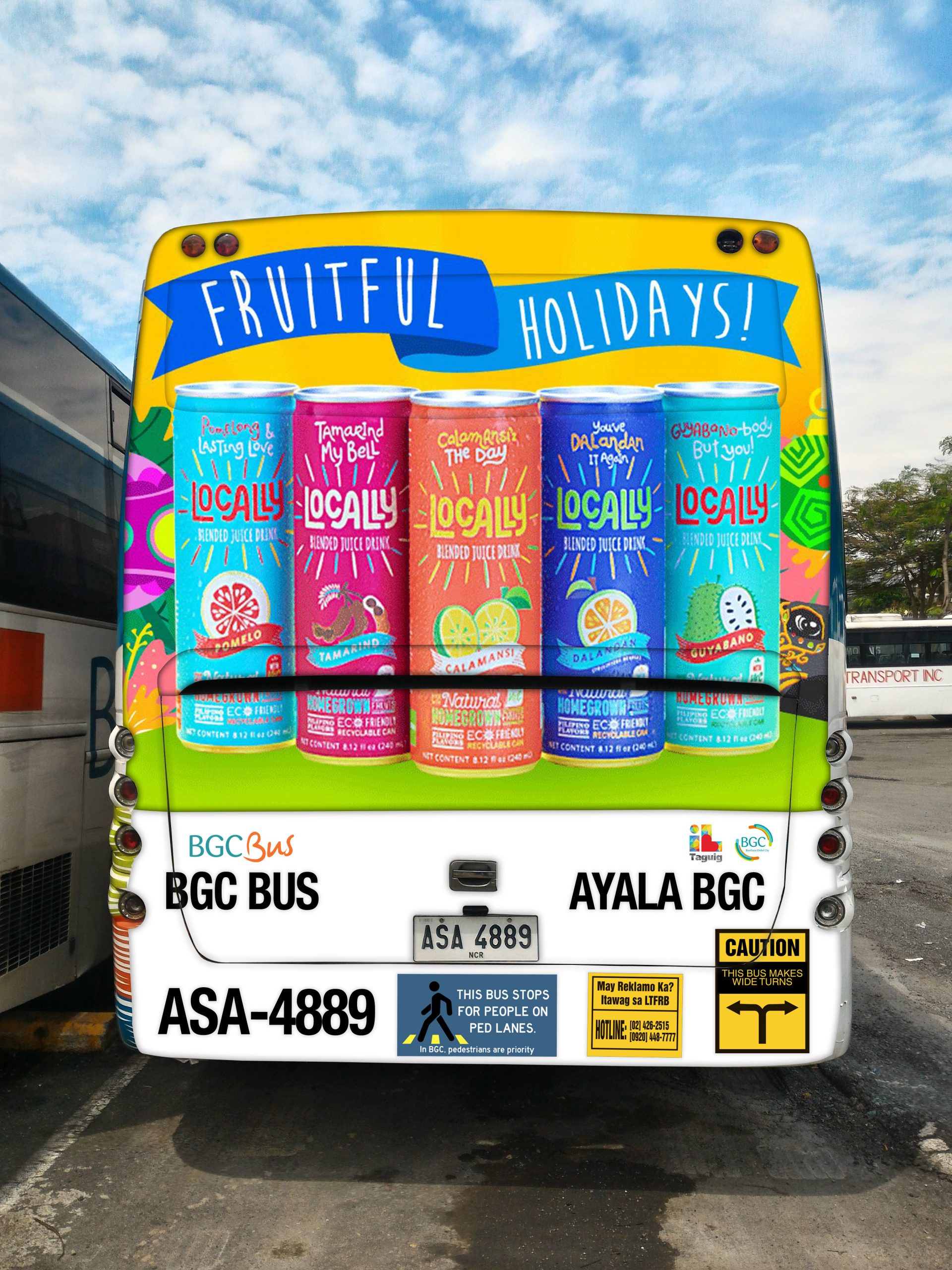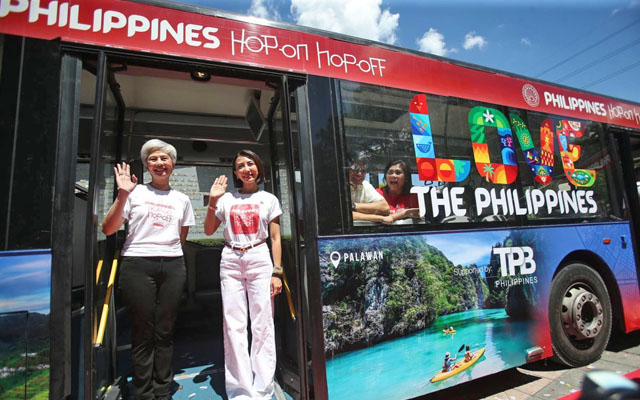Budget Friendly Transit Advertising Philippines for Brand Name Awareness
Budget Friendly Transit Advertising Philippines for Brand Name Awareness
Blog Article
Recognizing the Role of Transportation Marketing in Enhancing Brand Exposure and Consumer Engagement
Transit advertising has emerged as an essential element in the advertising and marketing landscape, offering one-of-a-kind chances for brands to elevate their visibility and involve customers effectively. With the capability to reach a diverse and captive target market during their daily commutes, these marketing techniques are not just about visibility; they are regarding developing meaningful connections with prospective consumers. As we discover the multifaceted benefits and ingenious strategies within transportation advertising, it ends up being essential to think about just how these elements collectively influence consumer understanding and behavior, increasing inquiries concerning their long-term effect on brand name commitment.
Meaning of Transportation Advertising And Marketing
Transportation marketing refers to the practice of promoting products, solutions, or brand names with ads put around mass transit systems. This type of marketing includes a range of placements, including posters on buses and trains, electronic screens at transit stations, and wraps on the exterior of automobiles. It intends to get to a varied target market, taking advantage of the high foot traffic connected with public transportation.
Transportation advertising and marketing is tactically placed to capture the focus of travelers, that frequently spend significant time waiting or taking a trip. By incorporating advertisements into the everyday routines of people, brands can develop a long-term perception and foster brand acknowledgment. The medium is particularly reliable in metropolitan environments, where public transport is a key setting of travel.
Additionally, transportation advertising and marketing can assist in local targeting, enabling businesses to get to particular demographics based upon transportation courses and terminal areas. As urban populaces expand and the use of public transportation increases, this advertising and marketing method has actually gained importance as a vital element of incorporated marketing approaches. The dynamic nature of transportation advertising and marketing, combined with its capacity to involve consumers in a restricted setting, emphasizes its significance in contemporary advertising practices.
Advantages of Transit Advertising
The performance of transit advertising and marketing depends on its ability to provide a wide range of advantages to brand names seeking to boost presence and interaction. Among the key benefits is the comprehensive reach it offers; transportation advertisements can efficiently target varied demographics across metropolitan locations, reaching both travelers and pedestrians alike. This wide exposure considerably boosts brand name awareness.
An additional benefit is the high regularity of impacts. As transportation cars follow established paths and quit at multiple areas, they produce repetitive exposure that strengthens brand name messages. This regularity promotes experience, which is essential in customer decision-making.
Transportation advertising is likewise cost-efficient compared to other media systems. Offered its extensive reach and possibility for high impacts, brand names often experience a lower price per thousand impacts (CPM), maximizing their marketing budget.
In addition, transit advertisements can create a sense of area connection. By straightening with local transit systems, brand names can resonate with local target markets and foster a sense of neighborhood satisfaction. This localized strategy enhances brand loyalty and interaction, making transportation advertising and marketing an engaging choice for organizations intending to strengthen their presence in the market.

Efficient Strategies for Transit Projects
To take full advantage of the impact of transit projects, brand names ought to take advantage of strategic preparation and execution customized to their target market. First, identifying the market attributes of the audience making use of public transportation is important. This enables brand names to develop tailored messaging that reverberates with prospective customers.
Next, selecting the ideal transportation mediums is essential. Whether making use of bus covers, train posters, or electronic screens, each medium has special benefits that can enhance presence. For example, lively visuals on bus wraps can attract focus, while electronic advertisements can be updated regularly to show timely promos.
In addition, incorporating a natural branding strategy across transit systems guarantees uniformity and enhances the brand name's identity. Making use of attractive designs and memorable taglines will certainly strengthen brand name recall among commuters.
By using these techniques, brands can effectively harness the capacity of transit advertising, cultivating better understanding and connection with their target audience. Inevitably, a well-executed transportation campaign can drive considerable development in brand presence and customer interaction.

Measuring Impact and Involvement
In examining the efficiency of transit marketing campaign, accurate dimension of influence and involvement is important for brand names looking for to optimize their marketing methods. Metrics such as reach, regularity, and perceptions offer foundational information to analyze visibility. Analyzing these aspects aids establish the number of prospective clients are revealed to the advertisements during their day-to-day commutes.
Interaction can be additional gauged with customer communications, such as website traffic, social media mentions, and straight reactions to calls-to-action featured in the advertisements. Utilizing devices like QR codes or distinct Links can assist in monitoring of customer habits directly linked to transportation campaigns. Studies and responses systems also work as useful methods to gather qualitative data on customer perceptions and recall of the advertisement.
Additionally, advanced analytics and acknowledgment versions can associate transportation direct exposure with subsequent purchasing behavior, using understandings index right into the roi. By using a thorough method that integrates qualitative and quantitative steps, brands can establish a nuanced understanding of their transportation advertising and marketing impact. Ultimately, this data-driven technique makes it possible for brand names to refine their campaigns, guaranteeing they reverberate effectively with target audiences and boost general brand name exposure.
Study of Successful Projects
Effective transportation marketing campaign serve as compelling instances of how effective techniques can raise brand exposure and interaction. Transit Advertising Philippines. One noteworthy situation is the "I Love New York" campaign, which transformed the city's image and attracted millions of travelers. By using train ads, billboards, and bus wraps, the campaign produced a strong, natural brand name identity, resulting in a substantial uptick in tourist and regional company patronage
Another excellent project is Coca-Cola's "Share a Coke" effort, which leveraged transit advertising to personalize the brand name experience. By including prominent names on marketing materials across various transit platforms, Coca-Cola fostered a deeper psychological link with customers, encouraging them to share their experiences on social media sites.
Additionally, the "Got Milk?" campaign efficiently utilized public transport ads to reach a wide target market, strengthening the message of the index importance of milk in a balanced diet plan. The campaign saw a quantifiable rise in milk consumption in target demographics.
These case research studies show that when carried out thoughtfully, transit marketing can dramatically boost brand name presence, foster customer interaction, and drive measurable results, demonstrating its vital role in modern advertising and marketing techniques. - Transit Advertising Philippines
Conclusion
In final thought, transit advertising and marketing functions as an essential tool for improving brand name presence and fostering customer interaction. By utilizing purposefully put advertisements within mass transit systems, brand names can efficiently enhance and reach diverse target markets acknowledgment through regular exposure. The implementation of targeted messaging and cutting-edge strategies better magnifies the impact of transportation campaigns. Ultimately, the capacity to measure involvement and analyze effective situation studies underscores the efficiency of transit advertising and marketing in driving brand name loyalty and consumer interactions.
Transportation advertising and marketing has arised as a pivotal aspect in the marketing landscape, providing special opportunities for brands to elevate their presence and involve consumers properly.Additionally, transportation advertising and marketing can facilitate local targeting, enabling organizations to reach details demographics based on transportation paths and station areas.In examining the efficiency of transit advertising and marketing campaigns, accurate dimension of effect and interaction is vital for brands this link seeking to maximize their advertising and marketing methods.Successful transit advertising and marketing campaigns serve as engaging instances of just how efficient strategies can boost brand name presence and involvement.In conclusion, transit advertising offers as a crucial device for boosting brand visibility and fostering consumer engagement.
Report this page